lock screen
description: the user interface displayed on mobile or computer screens when not in use, requiring a user action to access functionality.
29 results
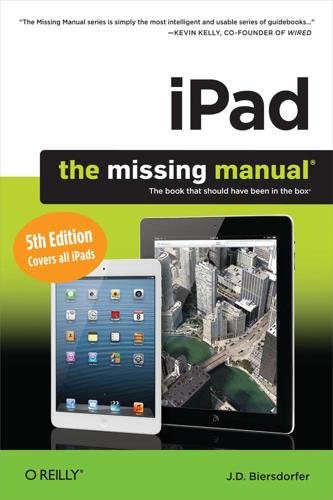
iPad: The Missing Manual, Fifth Edition
by
J.D. Biersdorfer
Published 21 Nov 2012
While your iPad displays only one program at a time, it can run several apps at once, a process known as multitasking. The Home button is your ticket to switching among these active apps (flip to Use the Home Button to Switch Apps for more). Double-click on the Lock screen. If your iPad has turned off its display to save power while you’ve got music playing, you can quickly get to the Music playback controls by double-clicking the Home button. As shown below, this double-whammy turns on both the iPad and its Lock screen (Turn the iPad On and Off), and displays a set of playback controls in the top bar (circled below). Use the Mute/Lock and Volume Buttons THE BUTTONS ON THE right edge of every iPad control the audio for movies, music, and apps that make noise.
…
Use the grip strip () to reorder the categories so the most important files show up first in search results. Auto-Lock. Tap this setting to adjust how long your iPad screen stays on before it turns itself off (and displays the Lock Screen when you wake it up). You can choose 2, 5, 10, or 15 minutes—or Never. Passcode Lock. If you have sensitive information on your iPad (or just want to keep the kids out), tap Passcode Lock. On the next screen, tap Turn Passcode On. Think up a four-digit number and verify it. From now on, to get by the iPad’s Lock Screen/Picture Frame, you must type in this code. If you have really sensitive data on your iPad, tap Settings→General→Passcode Lock→Erase Data to completely wipe all the information off the iPad’s drive if someone incorrectly enters the passcode more than 10 times.
…
Tapping Settings→Brightness & Wallpaper lets you a) use a virtual slider to make the screen dimmer or brighter so it’s easier on your eyes, and b) select a new image to appear as the background (wallpaper) for both your iPad’s Lock Screen (the one you see when you wake the iPad from sleep but before you swipe the Unlock slider) and its Home screen (where all your apps live). Tap the Wallpaper label to select new background images from Apple’s stock shots or from a set of photos you added to your tablet (see Chapter 16 to learn how to add pics). Tap a thumbnail to preview a photo, and then tap the button of your choice: Set Lock Screen, Set Home Screen, Set Both, or Cancel. Picture Frame The iPad’s built-in Picture Frame feature (Turn the iPad into a Picture Frame) lets you show off your photo collection when you’re not using the tablet for other things.

Kindle Fire: The Missing Manual
by
Peter Meyers
Published 9 Feb 2012
Previous/next track, pause/play button. All of ’em work just as they have since the first cassette recorder. Not here: rewind and fast forward options. To do either, drag the Progress bar’s white button. Tip Want to access these controls when your Fire’s lock screen is showing? In the Options bar, pick Settings, and turn on the “Lock-screen controls” checkbox. A similar shortcut is available if you’re in any non-music playing app on the Fire. Just tap Quick Settings and, if you’ve got music playing, the choices that drop down from the top of the screen include the most common play controls you’ll need.
…
Choose one of these to control how quickly your Fire falls asleep (Turning the Fire Off) if you don’t touch it. The longer the screen remains lit, of course, the quicker your battery drains. Security Turn the Lock Screen Password on if you’d like anyone who uses your Fire—including, of course, yourself—to enter a code before being allowed onto the home screen. The password prompt appears after you swipe the lock screen’s orange arrow. The Home Screen explains how to install this particular lock. The next two options—Credential Storage and Device Administrators—are for those who want to join highly secured WiFi networks (ask your friendly IT person for what to enter to join a VPN network) and for third-party apps like the Exchange-friendly Touchdown (see the Note on Note) that require a special password to control some under-the-hood functions of the Fire.
…
Now restart the device by pressing the power button (briefly, not longer than a second). It will perform a normal startup sequence and bring you back to the regular welcome point, the lock screen. Tip Seeing a pop-up menu or anything onscreen (a dialog box, message window, and so on) that’s keeping you from reaching the underlying app’s main screen? Try tapping the Back button on the Options bar (see the Note on The Home Screen). WiFi Not Working The most common symptom strikes when you’re waking the Fire up. You press the power button, swipe open the lock screen, and then launch an app. Up pops the telltale “No Internet Connection” message box. On the Status bar’s right edge, check to see if the WiFi icon is on (one to four curved white bars, with more bars equaling a stronger connection).

So Close to Being the Sh*t, Y'all Don't Even Know
by
Retta
Published 28 May 2018
I kept getting these #JustinWilliamsLockScreen tweets and was getting annoyed that people had nothing better to do than harass me about this stupid lock screen. Let’s put our energies into willing a Kings goal, for God’s sake. Eight minutes later we scored a goal that had to be reviewed and I took that time to look through my @mentions. People were insistent about this lock screen and I thought to myself, This game is going to be kuh-ray-zee. Fuckin’ ’ell, what could it hurt? I googled pics of Justin, found one that I thought he looked supes cute in, and I swear to God just as I hit SET LOCK SCREEN do you know that motherfucker scored a goal to tie it up?!?!?! I. Lost. My.
…
I finally recovered and calmed the hell down to go back to watching the game only to have Chicago score within minutes to take back the lead 3-2. The second period starts and not much is happening. It’s a full ten minutes and I’m anxious so I start rubbing the lock screen for luck and I shit you not, we scored AGAIN!!!! It was 3-3 and I’m thinkin’ this lock-screen nonsense is legit. Of course I am now maniacal about it. I’m rubbing that iPhone screen like there’s a genie locked inside. We end up going into overtime, again, and winning the game 5-4 off of a random goal that bounced off a Blackhawk’s shoulder.
…
“Please return to your seat, ma’am.” I eventually took to just leaning on the glass. It worked. We beat the Blackhawks 5-2 that night. At this point I was clearly ALL IN … almost. I was 100 percent behind the Kings. I DID BELIEVE, but I started getting tweets from other Kings fans to put Justin Williams on my lock screen. Apparently this was becoming a thing, a thing I just wasn’t into. I mean I’m superstitious, Justin is my boo and Mr. Game 7, but really? I just wasn’t feelin’ it. So it’s game 7 of the semifinal series and we’re playing in Chicago. The game does not start off well. Less than halfway through the first period the Blackhawks went up 2-0.

Ubuntu 15.04 Server with systemd: Administration and Reference
by
Richard Petersen
Published 15 May 2015
You can then switch back to the guest user. The guest user's open windows and work will be restored. Lock Screen You can choose to lock your screen and suspend your system by choosing the Lock entry in the Session menu, or by pressing Ctrl-Alt-L. To start up again, press the spacebar and the Lock Screen dialog appears (see Figure 3-11 ). This is the same as the login screen, with only a single entry for your user name and the password prompt. Enter your password to start up your desktop session again. From the lock screen, you also can switch to another user by clicking the Session button at the top right of the screen to open a menu with entries for other users.
…
Selecting one of these user entries suspends your current session (though applications continue to run), and starts up the login screen with the user list positioned at that user. If you log out of a user you have switched to (Log Out entry), LightDM login screen will start up letting you log in as a different user. If you choose to switch to a user already logged in, then the login dialog for the lock screen will appear for that user. From the lock screen, you can log in (Unlock), or choose to switch to another user (Switch User). A logged in user’s original session will continue with the same open windows and applications running when the user switched off. You can easily switch back and forth between logged-in users, with all users retaining their session from where they left off.
…
Setting the date and time Editing files with the command line interface: text editors Help Resources accessible from the command line Application Documentation The Man Pages The Info Pages Using the Ubuntu Desktop Interface The Light Display Manager: LightDM The Session menu and the User Switcher Guest login Lock Screen Shut down and Logging out The Ubuntu Desktop (Unity) Ubuntu Unity Gnome file manager (Nautilus) Network Connections from the desktop Network Manager wired connections Network Manager wireless connections Network Manager options Setting up shared directories on the desktop (nautilus-share) Terminal Window on the desktop System Settings Ubuntu Help Center on the desktop Ubuntu Desktop Guide 4.
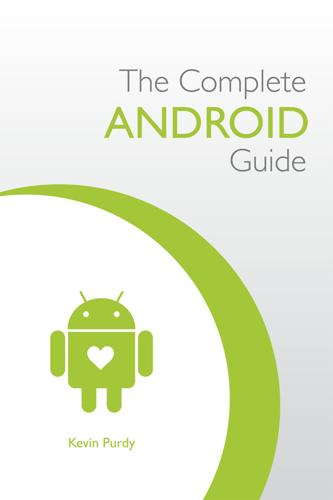
The Complete Android Guide: 3Ones
by
Kevin Purdy
Published 15 Apr 2011
On phones with an older version of Android, you'll see a menu similar to the one below at right, showing the same kind of basics. Hit the Menu key—which either says "Menu" on it, or looks like a short stack of horizontal bars, to head to the Home screen. Android Home Screen On an HTC phone, the lock screen is slightly different, and the action to "unlock" your phone is to pull the gray bar down: HTC Lock Screen After you've got your phone set up and unlocked, it's time for the fun to begin. Not that reading about email setup and account privacy wasn't fun, am I right? The Home Screen Not every Android's home screen looks the same, but they all work in mostly, pretty much, kinda the same way.
…
Finally, some carriers add a few other options for account integration just before the setup process is done: Linking Social Media Accounts Again, you can easily skip this step and set up these accounts later in your phone's settings, but it's fairly easy to do from this screen, too, while you're in a "Here's my password" mood. Hit the "Finish Setup" button, and you'll arrive at your phone's "lock" screen—it's what you'd see if you woke up/turned on your phone after a few minutes in your pocket. On a new stock Android phone (pictured below at left) and some Motorola models, you'll see the time, date, and battery amount charged on the screen. In the upper-right corner, you'll see the cellular carrier your phone's detecting, but don't freak out if it's not what you expect—that can change depending on your geographic location.

Androids: The Team That Built the Android Operating System
by
Chet Haase
Published 12 Aug 2021
System UI & Launcher The system UI of Android is the set of all of the visual elements that the user interacts with on the screen outside of apps, including things like the navigation bar, the notification panel, the status bar, the lock screen, and the launcher. In the early days on the team, all of this work happened in the overall framework team, which consisted of just a small handful of people. Functionality like the status bar, lock screen, and launcher were written by people who were also writing core framework and UI toolkit code.227 This was an efficient way to handle the different pieces, because the same people who were writing these pieces were also writing the platform features that were needed, so they could implement everything they needed on both sides of the problem.
…
Mike began life on Android by working on the UI toolkit, along with a host of other things, including the launcher200 and the system UI. He eventually became the manager of what was called the “framework team,” which was comprised of the UI toolkit, the framework team,201 and various parts of the system UI, like the lock screen, launcher, and the notification system.202 One of Mike’s first projects after joining Android in March of 2006 was to rewrite the UI toolkit code that Joe Onorato had written. There was growing disagreement over the toolkit’s architecture; some people on the team felt that the multi-threaded nature of the system was causing undue complexity in both that code and in the apps that used it.
…
Users launch apps from their icons, they interact with the buttons, lists, and other pieces inside of apps, they click on links in apps that launch other apps, and so on. This is basically the world in which users live, interacting with the apps directly, while accessing all of the platform functionality only indirectly, through what these apps expose. Note that the system-provided functionality of the home screen, the navigation bar, the status bar, and the lock screen are all considered apps. Even though they are provided by the platform (either Android itself, or in some cases by a manufacturer like Samsung, which provides its own system apps), they’re still just apps. APIs Application Programming Interfaces, or APIs, are the pieces of functionality in the platform that applications interact with.

Dry Humping: A Guide to Dating, Relating, and Hooking Up Without the Booze
by
Tawny Lara
Published 19 Sep 2023
You can turn this into your mantra or personalized affirmation. ❤ Ask a friend to text you this mantra when you’re out on a date, or at random times, as a simple reminder of why you’re choosing to date alcohol-free right now. Or better yet, schedule these affirmations as emails to yourself. ❤ Plug these sentences into a photo app to create a DIY lock screen or backdrop for your phone. ❤ Write your why on sticky notes and place them around your home. These self-generated affirmations may come in handy when you feel like throwing in the towel on sober dating. Benefits of Dry Dating Maybe liquid courage helps you feel more social on a date, but at what cost?
…
Discerning between the two might give you a home base to revisit when dating and sex feel overwhelming without alcohol. ❤ Create ways to access this comfort zone while you’re on a date. If your newly decorated closet makes you feel at ease, keep a piece of the wallpaper in your wallet! Does snuggling with your fur baby give you all the good feels? Make your phone’s lock screen a photo of your pet to glance at throughout the date. ❤ Talk to someone you trust (friend, therapist, sponsor) about what makes you feel safe and comfortable. Saying these words out loud can help boost your confidence because you’re proudly advocating for yourself! ❤ Remember all the work you did on dating yourself in Chapter 1?
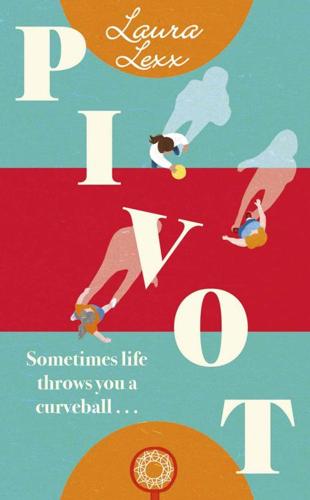
Pivot: A Story of Dropping the Ball, Picking It Up Again, and Turning Things Around.
by
Laura Lexx
Published 22 Jun 2022
Renee had very carefully never acknowledged the existence of the accursed WhatsApp group and therefore everyone forgot her existence. Clever girl, Jackie thought. The buzzing reached a point where she couldn’t bear it any longer and she picked the phone up off the counter to deal with the latest batch of argumentative emojis. Her heart immediately began to race as she noticed in the lock screen list a message from Duncan nestled among the group chat. She unlocked the phone on the third attempt at the passcode and headed straight for Duncan’s missive. ‘It’s casual, that’s good. Well phrased; light but asking questions, so you know you can reply without him thinking you’re weird.’ Jay finished summarising the message and passed it on to Ros to have a look.
…
She wouldn’t, and she knew she wouldn’t, but she would stay just a little bit longer and was determined not to feel guilty about it. She brewed a coffee and gathered up her phone to go and let her hair dry naturally on the balcony. The roots were coming through rather urgently, but perhaps a bit more sun would help bleach them and put off the need for a hairdresser and hours in foil. The lock screen on her phone was awash with notifications. Six missed calls from Steve. This was getting ridiculous. Just as she went to draft a stern message to him that she would edit down later to a mild reproof, her phone buzzed again with his name at the centre of the screen. ‘Oh Steve for goodness sake, Jay and her mother are not my resp—’ ‘No, Jackie, it’s Ros.’ 42 If getting out to Crete was a blur, then getting back was a badly pixelated slow-motion nightmare.

Habeas Data: Privacy vs. The Rise of Surveillance Tech
by
Cyrus Farivar
Published 7 May 2018
Indeed, the June 2011 federal wiretap report noted dryly: “In 2010, encryption was reported during six state wiretaps, but did not prevent officials from obtaining the plain text of the communications.” Even Apple—a company that particularly since the 2016 San Bernardino case has really pushed for increased security—for years prior didn’t take all of the security steps that it could have taken in the design of iOS. “The lock screen is merely a screen saver lock, which as most people know doesn’t equate to real security anyway,” wrote Jonathan Zdziarski, an iOS security expert who now works for Apple, in April 2013. Under certain conditions, this is one technique law enforcement forensic engineers are able to perform to unlock a device they’ve seized, if all other forensic techniques fail.
…
For the most part, mainstream: 2010 Report of the Director of the Administrative Office of the United States Courts on Applications for Orders Authorizing or Approving the Interception of Wire, Oral, or Electronic Communications. Available at: https://www.documentcloud.org/documents/3879529-2010wiretapreport.html#document/p7/a360130. “The lock screen is merely”: Jonathan Zdziarski, “Your iOS device isn’t as encrypted as you think,” April 18, 2013. Available at: https://www.zdziarski.com/blog/?p=2149. However, everyone’s notion: Dan Goodin, “Guardian Reporter Delayed E-mailing NSA Source Because Crypto Is a Pain,” Ars Technica, June 11, 2013.

The Awoken: A Novel
by
Katelyn Monroe Howes
Published 8 Aug 2022
My Max. The possibility that I wasn’t going to be alone in this horrible world consumed every part of me. Our meeting was eventually interrupted with an urgent matter that Wade had to see to. I walked out of the tent in a stupor, relishing the comforting glow of Max’s phone. The picture on the lock screen was from my best friend Andy’s twenty-third birthday party. We were in her backyard. Edison bulb string lights, mason jars, and recycled wine bottles filled with flowers intimately decorated the lush garden. A real Pinterest wet dream of early-twenty-somethings trying to play adult and have a cocktail party.
…
Finally, I winced as my finger was cut along a paper’s edge. I grabbed the offending object and pulled it out of my pocket. Minchin’s business card. The phone that I’d turned to so often in these last few weeks to save me was now going to save all of us. I booted it up. After a moment, the picture of Max and me appeared on the lock screen. For a brief second, I allowed myself to stare at it, at our love. Drawing strength from the picture, I unlocked the phone, turned the cell service back on, and waited for the icon in the top right corner to show a signal. “What are you doing?” Gina asked. “Negotiating,” I responded.
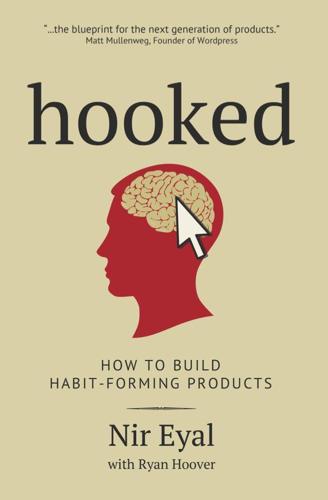
Hooked: How to Build Habit-Forming Products
by
Nir Eyal
Published 26 Dec 2013
We try to capture these memories in photos, but if our camera is out of reach or too cumbersome to catch the shot, we lose those moments forever. Apple recognized it could help iPhone owners take more photos by making the process easier. The company made the camera app directly launchable from the locked screen, without requiring a password. Compared with the number of steps needed to access photo apps on other smartphones, the simple flick gesture of the native iPhone camera gives it a virtual monopoly as users’ go-to solution whenever they need to snap a quick pic (figure 12). FIGURE 12 Scrolling with Pinterest How can a Web site make browsing easier?

15-Minute German: Learn in Just 12 Weeks
by
Dorling Kindersley
Published 5 Dec 2023
Sylvia Goulding LEARN IN JUST 12WEEKS G G E E R R M M A A N N MINUTE 15 Due to the complex integration of images and text, this DK eBook has been formatted to retain the design of the print edition. As a result, all elements are fixed in place, but can easily be enlarged by using the pinch-to-zoom function. For previewing rotated pages or spreads, please lock screen rotation in your device first. If you are previewing this eBook on a mobile phone, portrait mode is recommended. If previewing on a tablet or larger display, landscape mode will allow you to see facing pages at the same time (two page view). About this eBook Contents REVISED EDITION DK LONDON Senior Editor Ankita Awasthi Tröger Senior Art Editor Clare Shedden Illustrators Peter Bull Art Studio and Dan Crisp Managing Editor Carine Tracanelli Managing Art Editor Anna Hall Production Editor Kavita Varma Senior Production Controller Poppy David Jacket Design Development Manager Sophia MTT Associate Publishing Director Liz Wheeler Art Director Karen Self Publishing Director Jonathan Metcalf DK DELHI Project Editor Nandini D Tripathy Senior Art Editor Ira Sharma Project Art Editor Anukriti Arora Assistant Art Editor Sulagna Das Managing Editor Soma B Chowdhury Senior Managing Art Editor Arunesh Talapatra Senior Jacket Designer Suhita Dharamjit Senior Jackets Coordinator Priyanka Sharma-Saddi DTP Coordinators Pushpak Tyagi DTP Designers Rakesh Kumar, Mrinmoy Mazumdar, Vikram Singh Hi-res Coordinator Neeraj Bhatia Production Editor Vishal Bhatia Production Manager Pankaj Sharma Pre-production Manager Balwant Singh Senior Picture Researcher Sumedha Chopra Picture Research Manager Taiyaba Khatoon Creative Head Malavika Talukder Language content for Dorling Kindersley by g-and-w publishing.

100 Things We've Lost to the Internet
by
Pamela Paul
Published 14 Oct 2021
Now that almost nobody has a landline, the family phone no longer reveals the comings and goings between the people inside and outside the home. What was once transparent is opaque. Parents no longer take calls for their kids or see a log of numbers on an itemized monthly bill. The ways in which kids communicate with their friends are encrypted or ephemeral. Parents don’t know whom their kids are talking to behind lock-screened devices, nor can they glean insight from overheard snippets of conversation, tearful exchanges, and slammed receivers. They don’t know whom their daughter is dying to hear from, and who their son is dreading might call. Little did parents appreciate how much they could learn from a simple “Tell him I’m not home
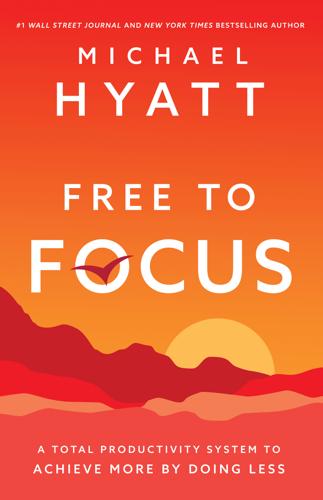
Free to Focus: A Total Productivity System to Achieve More by Doing Less
by
Michael Hyatt
Published 8 Apr 2019
I find it’s best to start by turning off all notifications—on my desktop, phone, and any other device—and then asking, “Are there any apps from which I absolutely must receive notifications?” Once you’ve determined which (precious few) apps you’ll allow to notify you, you’ll want to pick the least obtrusive, jarring alert style possible. For me that means no message previews, pings, dings, or lock-screen notifications. An often-overlooked trick to limit notifications is to make maximal use of your iPhone’s do-not-disturb feature. I also recommend eliminating most text messages and phone calls you receive, especially if you get several dozen (or more) a day. One trick is to change your cell number.
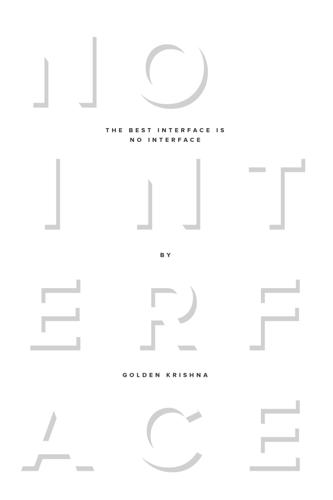
The Best Interface Is No Interface: The Simple Path to Brilliant Technology (Voices That Matter)
by
Golden Krishna
Published 10 Feb 2015
A day with our smartphones looks like this: Unplug your smartphone from the charger, put in your pocket or purse, pull it out to use the interface for a moment, put the phone back in your pocket or purse, pull it out to use the interface for a moment, put the phone back in your pocket or purse, pull it out to use the interface for a moment, put the phone back in your pocket or purse, pull it out to use the interface for a moment, put the phone back in your pocket or purse, pull it out to use the interface for a moment, put the phone back in your pocket or purse, pull it out to use the interface for a moment, put the phone back in your pocket or purse, pull it out to use the interface for a moment, put the phone back in your pocket or purse, pull it out to use the interface for a moment, put the phone back in your pocket or purse, pull it out to use the interface for a moment, put the phone back in your pocket or purse, pull it out to use the interface for a moment, put the phone back in your pocket or purse, pull it out to use the interface for a moment, put the phone back in your pocket or purse, pull it out to use the interface for a moment, put the phone back in your pocket or purse, pull it out to use the interface for a moment, put the phone back in your pocket or purse, and plug it in to charge while you sleep. As you read it, the same phrase repeated fifteen times may have felt redundantly silly; but Locket, a small New York City–based startup that makes a custom lock screen experience for Android, found that their roughly 150,000 users check their phones much more often.15 One hundred and ten times a day, in fact. Unplug your smartphone from the charger, put in your pocket or purse, pull it out to use the interface for a moment, put the phone back in your pocket or purse, pull it out to use the interface for a moment, put the phone back in your pocket or purse, pull it out to use the interface for a moment, put the phone back in your pocket or purse, pull it out to use the interface for a moment, put the phone back in your pocket or purse, pull it out to use the interface for a moment, put the phone back in your pocket or purse, pull it out to use the interface for a moment, put the phone back in your pocket or purse, pull it out to use the interface for a moment, put the phone back in your pocket or purse, pull it out to use the interface for a moment, put the phone back in your pocket or purse, pull it out to use the interface for a moment, put the phone back in your pocket or purse, pull it out to use the interface for a moment, put the phone back in your pocket or purse, pull it out to use the interface for a moment, put the phone back in your pocket or purse, pull it out to use the interface for a moment, put the phone back in your pocket or purse, pull it out to use the interface for a moment, put the phone back in your pocket or purse, pull it out to use the interface for a moment, put the phone back in your pocket or purse, pull it out to use the interface for a moment, put the phone back in your pocket or purse, pull it out to use the interface for a moment, put the phone back in your pocket or purse, pull it out to use the interface for a moment, put the phone back in your pocket or purse, pull it out to use the interface for a moment, put the phone back in your pocket or purse, pull it out to use the interface for a moment, put the phone back in your pocket or purse, pull it out to use the interface for a moment, put the phone back in your pocket or purse, pull it out to use the interface for a moment, put the phone back in your pocket or purse, pull it out to use the interface for a moment, put the phone back in your pocket or purse, pull it out to use the interface for a moment, put the phone back in your pocket or purse, pull it out to use the interface for a moment, put the phone back in your pocket or purse, pull it out to use the interface for a moment, put the phone back in your pocket or purse, pull it out to use the interface for a moment, put the phone back in your pocket or purse, pull it out to use the interface for a moment, put the phone back in your pocket or purse, pull it out to use the interface for a moment, put the phone back in your pocket or purse, pull it out to use the interface for a moment, put the phone back in your pocket or purse, pull it out to use the interface for a moment, put the phone back in your pocket or purse, pull it out to use the interface for a moment, put the phone back in your pocket or purse, pull it out to use the interface for a moment, put the phone back in your pocket or purse, pull it out to use the interface for a moment, put the phone back in your pocket or purse, pull it out to use the interface for a moment, put the phone back in your pocket or purse, pull it out to use the interface for a moment, put the phone back in your pocket or purse, pull it out to use the interface for a moment, put the phone back in your pocket or purse, pull it out to use the interface for a moment, put the phone back in your pocket or purse, pull it out to use the interface for a moment, put the phone back in your pocket or purse, pull it out to use the interface for a moment, put the phone back in your pocket or purse, pull it out to use the interface for a moment, put the phone back in your pocket or purse, pull it out to use the interface for a moment, put the phone back in your pocket or purse, pull it out to use the interface for a moment, put the phone back in your pocket or purse, pull it out to use the interface for a moment, put the phone back in your pocket or purse, pull it out to use the interface for a moment, put the phone back in your pocket or purse, pull it out to use the interface for a moment, put the phone back in your pocket or purse, pull it out to use the interface for a moment, put the phone back in your pocket or purse, pull it out to use the interface for a moment, put the phone back in your pocket or purse, pull it out to use the interface for a moment, put the phone back in your pocket or purse, pull it out to use the interface for a moment, put the phone back in your pocket or purse, pull it out to use the interface for a moment, put the phone back in your pocket or purse, pull it out to use the interface for a moment, put the phone back in your pocket or purse, pull it out to use the interface for a moment, put the phone back in your pocket or purse, pull it out to use the interface for a moment, put the phone back in your pocket or purse, pull it out to use the interface for a moment, put the phone back in your pocket or purse, pull it out to use the interface for a moment, put the phone back in your pocket or purse, pull it out to use the interface for a moment, put the phone back in your pocket or purse, pull it out to use the interface for a moment, put the phone back in your pocket or purse, pull it out to use the interface for a moment, put the phone back in your pocket or purse, pull it out to use the interface for a moment, put the phone back in your pocket or purse, pull it out to use the interface for a moment, put the phone back in your pocket or purse, pull it out to use the interface for a moment, put the phone back in your pocket or purse, pull it out to use the interface for a moment, put the phone back in your pocket or purse, pull it out to use the interface for a moment, put the phone back in your pocket or purse, pull it out to use the interface for a moment, put the phone back in your pocket or purse, pull it out to use the interface for a moment, put the phone back in your pocket or purse, pull it out to use the interface for a moment, put the phone back in your pocket or purse, pull it out to use the interface for a moment, put the phone back in your pocket or purse, pull it out to use the interface for a moment, put the phone back in your pocket or purse, pull it out to use the interface for a moment, put the phone back in your pocket or purse, pull it out to use the interface for a moment, put the phone back in your pocket or purse, pull it out to use the interface for a moment, put the phone back in your pocket or purse, pull it out to use the interface for a moment, put the phone back in your pocket or purse, pull it out to use the interface for a moment, put the phone back in your pocket or purse, pull it out to use the interface for a moment, put the phone back in your pocket or purse, pull it out to use the interface for a moment, put the phone back in your pocket or purse, pull it out to use the interface for a moment, put the phone back in your pocket or purse, pull it out to use the interface for a moment, put the phone back in your pocket or purse, pull it out to use the interface for a moment, put the phone back in your pocket or purse, pull it out to use the interface for a moment, put the phone back in your pocket or purse, pull it out to use the interface for a moment, put the phone back in your pocket or purse, pull it out to use the interface for a moment, put the phone back in your pocket or purse, pull it out to use the interface for a moment, put the phone back in your pocket or purse, pull it out to use the interface for a moment, put the phone back in your pocket or purse, pull it out to use the interface for a moment, put the phone back in your pocket or purse, pull it out to use the interface for a moment, put the phone back in your pocket or purse, pull it out to use the interface for a moment, put the phone back in your pocket or purse, pull it out to use the interface for a moment, put the phone back in your pocket or purse, pull it out to use the interface for a moment, put the phone back in your pocket or purse, pull it out to use the interface for a moment, put the phone back in your pocket or purse, pull it out to use the interface for a moment, put the phone back in your pocket or purse, pull it out to use the interface for a moment, put the phone back in your pocket or purse, pull it out to use the interface for a moment, put the phone back in your pocket or purse, pull it out to use the interface for a moment, put the phone back in your pocket or purse, pull it out to use the interface for a moment, put the phone back in your pocket or purse, pull it out to use the interface for a moment, put the phone back in your pocket or purse, pull it out to use the interface for a moment, put the phone back in your pocket or purse, pull it out to use the interface for a moment, put the phone back in your pocket or purse, pull it out to use the interface for a moment, put the phone back in your pocket or purse, pull it out to use the interface for a moment, put the phone back in your pocket or purse, pull it out to use the interface for a moment, put the phone back in your pocket or purse, pull it out to use the interface for a moment, put the phone back in your pocket or purse, pull it out to use the interface for a moment, put the phone back in your pocket or purse, pull it out to use the interface for a moment, put the phone back in your pocket or purse, pull it out to use the interface for a moment, put the phone back in your pocket or purse, pull it out to use the interface for a moment, put the phone back in your pocket or purse, pull it out to use the interface for a moment, put the phone back in your pocket or purse, pull it out to use the interface for a moment, put the phone back in your pocket or purse, pull it out to use the interface for a moment, put the phone back in your pocket or purse, pull it out to use the interface for a moment, put the phone back in your pocket or purse, pull it out to use the interface for a moment, put the phone back in your pocket or purse, pull it out to use the interface for a moment, put the phone back in your pocket or purse, pull it out to use the interface for a moment, put the phone back in your pocket or purse, pull it out to use the interface for a moment, put the phone back in your pocket or purse, pull it out to use the interface for a moment, put the phone back in your pocket or purse, pull it out to use the interface for a moment, put the phone back in your pocket or purse, pull it out to use the interface for a moment, put the phone back in your pocket or purse, pull it out to use the interface for a moment, put the phone back in your pocket or purse, pull it out to use the interface for a moment, put the phone back in your pocket or purse, pull it out to use the interface for a moment, put the phone back in your pocket or purse, pull it out to use the interface for a moment, put the phone back in your pocket or purse, and plug it in to charge while you sleep.

Notes From an Apocalypse: A Personal Journey to the End of the World and Back
by
Mark O'Connell
Published 13 Apr 2020
I didn’t have to read everything, she said; most of the time it was enough just to glance at the headline. Though I took her basic point about duration of exposure, it was the headlines themselves that were the proximal cause of my distress. This was a time in which payloads of apocalyptic force were delivered to the lock screen of my phone. It was the end of 2016, the winter of an ignoble year, and the more or less hourly vibration in my pocket was a kind of post-traumatic thrum, a bracing for whatever fresh hell I was about to peer into. I had come to think of my phone as my eschatology handset, my streaming service of last things.
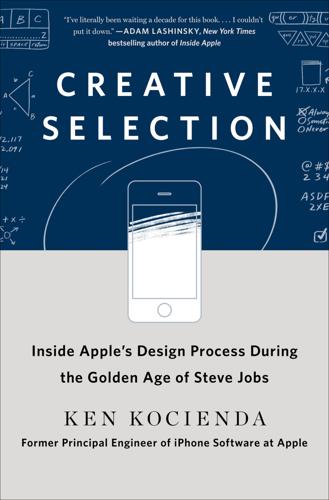
Creative Selection: Inside Apple's Design Process During the Golden Age of Steve Jobs
by
Ken Kocienda
Published 3 Sep 2018
My expanded explanation also serves as a statement of our product development vision, and we treated this as a practical problem. We assembled our tools and we got to work, hoping we could create designs and write code that would turn our dreams for great products into a reality. Notes * If you ever wondered why iPhones and iPads often show 9:41 as the time on the lock screen and in the status bar in ads and posters, the reason is that the Apple keynotes were often planned out to do the biggest product introduction about forty minutes into the show. (Note that online videos of these presentations omit clips of copyrighted material from music, TV shows, and movies, so the times are off.)
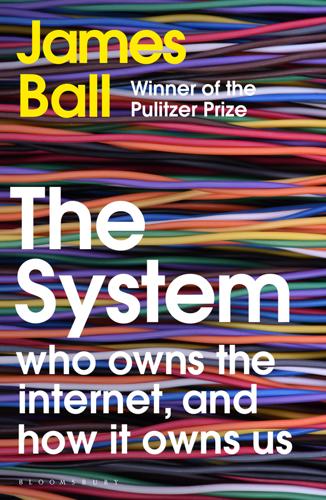
The System: Who Owns the Internet, and How It Owns Us
by
James Ball
Published 19 Aug 2020
If any one attack exemplifies the mess the cyber warriors have created – the consequences of the ongoing government versus government battles, agencies hiding their knowledge of vulnerabilities, and the ease with which an attack can spread, far beyond the control of its maker – it’s the May 2017 attack that came to be known as ‘WannaCry’.18 The attack also shows the bizarre world of responding to such threats – in which one security researcher working on his own proved more useful in staving off the threat than major intelligence agencies and security corporations. For people in the UK, the first sign that something was wrong was reports from across the National Health Service that its computers were failing. Computers were locking up, and then restarting with a locked screen saying the system’s contents had been encrypted – and would be kept locked unless a payment of $300 in Bitcoin (the anonymous online currency) was made within three days. After three days, the price would double. After seven, the data would be irretrievably deleted for ever. This is a type of attack known as ransomware, named because it holds your computer and data hostage in hope of a quick profit if you pay up.

A Life Less Throwaway: The Lost Art of Buying for Life
by
Tara Button
Published 8 Feb 2018
Finding it in the fridge, as I did one day, can be doubly distressing because you realise your natural dappiness has reached whole new heights. Around 2 million phones a year are stolen in America, but another 3 million are lost.2 This is quite a problem! Some simple steps everyone should take: •Make sure you have a finding app such as Find My Phone installed. •Use your lock screen to display an ‘If found, please contact’ message or use Apple’s emergency note feature. •Never put your phone in a back pocket or on a table in a restaurant or café. If you must do either of these things, be aware of people coming past. •Choose a particular place in each room of your house where you’ll put your phone down.
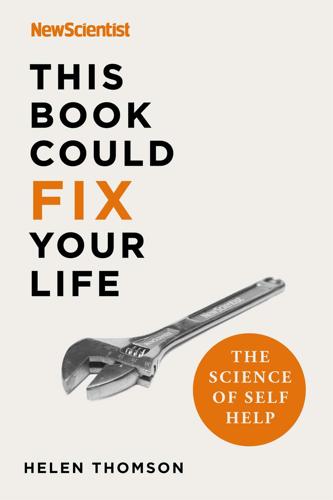
This Book Could Fix Your Life: The Science of Self Help
by
New Scientist
and
Helen Thomson
Published 7 Jan 2021
I have to choose to interact with WhatsApp and I rarely get lost in YouTube videos, unless I’ve specifically given myself time to do so. If this doesn’t sound like you, introduce a ‘mental speed bump’ that interrupts the habit of checking your phone, such as writing a note to yourself on your lock screen or simply wrapping a rubber band around the device as a reminder. Or use night-time settings and wind down modes designed to make the screen less enticing by turning it black and white. Whether this results in positive health and lifestyle changes is still an unanswered question. Every new technology has given rise to new fears.

Hype: How Scammers, Grifters, and Con Artists Are Taking Over the Internet―and Why We're Following
by
Gabrielle Bluestone
Published 5 Apr 2021
In fact, in a February 2019 experiment in weaning himself off his cell phone, the New York Times tech columnist Kevin Roose cited “maintaining ambient Kardashian awareness” as one reason to continue using social media apps like Twitter and Facebook.145But he had found that using social media so frequently had made him “angry and anxious,” so he attempted to unhook his brain from it by quitting the apps for thirty days. To aid his efforts, he wrapped a rubber band around his phone and changed the lock screen to ask three questions: What for? Why now? What else? Escalating things further, he locked his phone inside a safe at night and took up pottery to distract his empty hands. For an incredible forty-eight hours, he even left his phone at home and traveled to an Airbnb in the country, using only paper maps and directions from strangers.
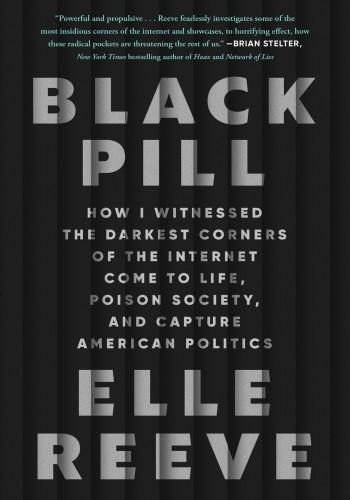
Black Pill: How I Witnessed the Darkest Corners of the Internet Come to Life, Poison Society, and Capture American Politics
by
Elle Reeve
Published 9 Jul 2024
Alt-right types occasionally try to infiltrate mainstream conservative events. At a Turning Point conference in West Palm Beach where Trump spoke to seven thousand cheering supporters, a young man asked to take a picture with me, and as he raised his phone to open his camera, I saw there were swastikas on his lock screen. Attendees had been invited to write their thoughts on the presidential candidates on Post-it Notes and stick them to cardboard cutouts of their heads. On the poster of Vivek Ramaswamy, nestled among notes saying “hero” and “brilliant” and “daddy” was one that said “1488” and another that had a Star of David crossed out with the word “Soon” underneath.

Hit Makers: The Science of Popularity in an Age of Distraction
by
Derek Thompson
Published 7 Feb 2017
Are you taking her to soccer practice or am I? How did the talk with Janine go? A 2012 Harvard study found that people use about one third of personal conversations to talk about themselves. Online, that number jumps to 80 percent. A person’s egoism quotient more than doubles when she opens a computer or lock screen. Look back at the Facebook article list: Nine of the ten stories have the words “you” or “your,” which, to each reader, mean “me” and “mine.” Offline, one on one, I talk to other people. Online, one to one thousand, I talk (and read) about myself. All communication involves an audience, but the size of the audience can shape the communication.

California Burning: The Fall of Pacific Gas and Electric--And What It Means for America's Power Grid
by
Katherine Blunt
Published 29 Aug 2022
Meanwhile, the climate would continue to change. While walking through the forest near the Napa County town of Calistoga, she snapped a photo. Employees in yellow vests walked among several large trees marked for removal, all to reduce the risk of fire and the need for wind-driven power shutoffs. She set the photo as her lock-screen wallpaper. It was time, she thought, to reassess the company’s strategy. In June, under Poppe’s direction, employees across multiple divisions convened to discuss a wholly different approach to managing power lines. They considered whether the company could do more to bury them in a process known as undergrounding.

Someone comes to town, someone leaves town
by
Cory Doctorow
Published 1 Jul 2005
She was excitingly plump, round and a little jiggly, the kind of woman Alan had always gone for. Of course, she was all of twenty-two, and so was certainly not an appropriate romantic interest for him, but she was fun to look at as she ungummed her eyes and worked the sleep out of her voice. "Yes?" she said through the locked screen door. Her voice brooked no nonsense, which Alan also liked. He'd hire her in a second, if he were still running a shop. He liked to hire sharp kids like her, get to know them, try to winkle out their motives and emotions through observation. "Good morning!" Alan said. "I'm Alan, and I just moved in next door.

The Optimist: Sam Altman, OpenAI, and the Race to Invent the Future
by
Keach Hagey
Published 19 May 2025
Thank you to my agent, Alice Martell, a champion who truly understands what authors need on every level. FOR THOSE affected by it, Altman’s firing was one of those crystalline moments that adrenaline locks into memory. I was leading my daughter’s Girl Scout troop through the woods when the shocking headline landed on my phone’s lock screen; the ground seemed to drop away. The following days were a sleepless blur, but I am grateful to have had my Journal colleagues Deepa Seetharaman, Tom Dotan, and Berber alongside me for it, as well as the steady hand of Liz Wollman, wisdom of Jason Dean, and relentless drive of Jamie Heller. I can’t think of anyone I’d rather share a foxhole with.

Terms of Service: Social Media and the Price of Constant Connection
by
Jacob Silverman
Published 17 Mar 2015
Andrew Ross calls these and similar methods “the micro-division of labor into puzzles, stints, chorus, and bits.” One of the largest of these services, reCAPTCHA, is owned by Google. This kind of disguised labor has percolated through many areas of digital life. An Android app called Twitch takes over your phone’s lock screen and, rather than having you enter an unlock code or pattern, asks you to answer a quick question or rate photos. Similar apps might pay a user a few cents to structure some data or confirm a statement on a Wikipedia page. The notion is that, because the action takes about as long as to punch in an unlock code and because we often pull out our phones when we’re bored or idle, then we also wouldn’t mind doing a little bit of work.

There Is No Place for Us: Working and Homeless in America
by
Brian Goldstone
Published 25 Mar 2025
Jacob was still playful and ebullient, taking DJ and Danielle bowling or to a Georgia Tech football game one weekend, to Dave & Buster’s the next. With Skye, who had turned two in March, he was as affectionate as ever. Yet Michelle thought he seemed jittery, not fully present. She noticed that his phone now had a passcode on its lock screen and that he’d begun to keep it with him at all times, even in the bathroom while showering. During the couple’s date nights, always initiated by Jacob, he made it a point to be, in Michelle’s words, “extra lovey-dovey,” but she found herself withdrawing from him physically, refusing his advances.

Facebook: The Inside Story
by
Steven Levy
Published 25 Feb 2020
What resolved the issue was a compromise: instead of Facebook making its own phone, it would create an alternate version of the Android operating system to create a scaled-down GFK experience. Facebook would license this to other phone manufacturers. While it retained some aspects of the original idea—these “Facebook Home” devices would be running Facebook even in the “lock screen” mode, before the owner even picked up the device—it fell far short of a direct assault on the current mobile powerhouses. Palihapitiya left not just the phone team but Facebook itself, and started his venture capital company. Facebook Home finally appeared in April 2013. HTC manufactured the first handset, with Samsung lined up to follow.